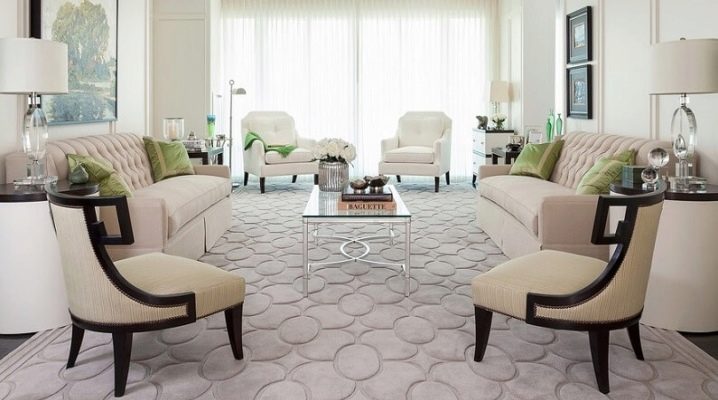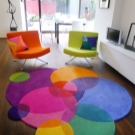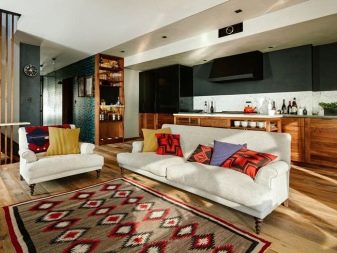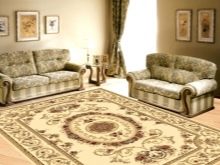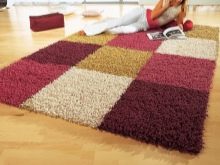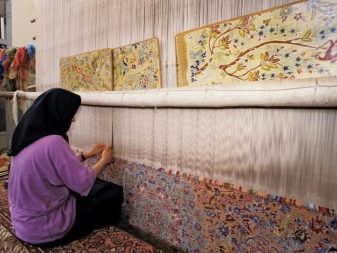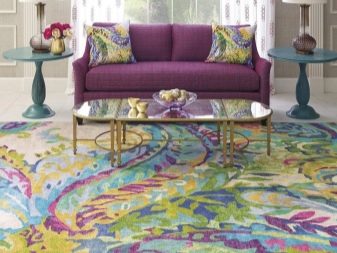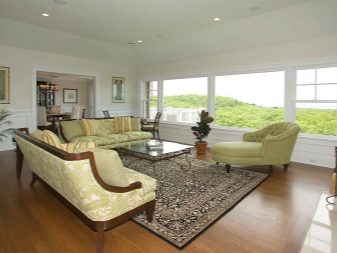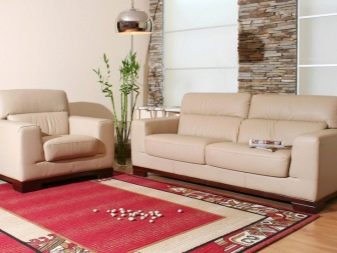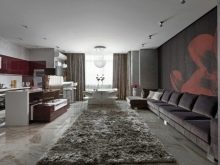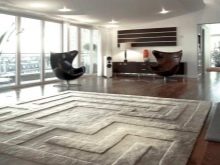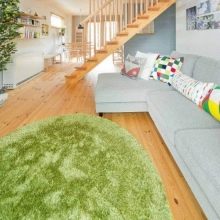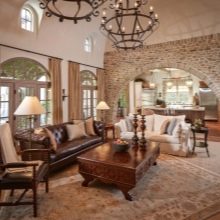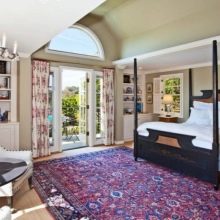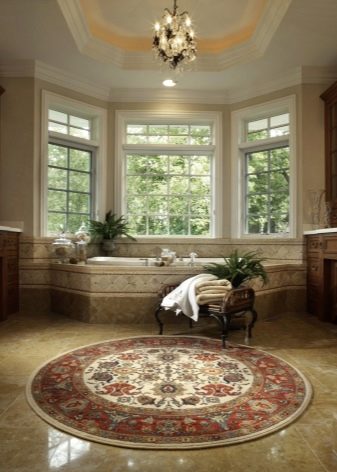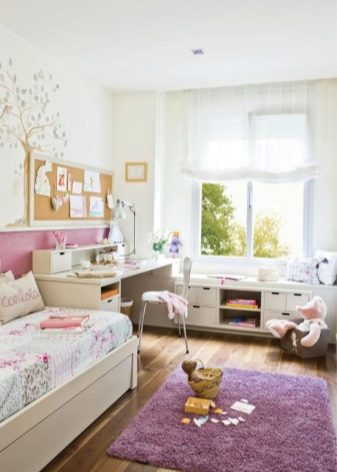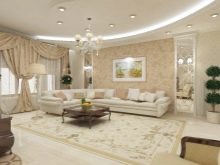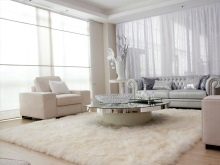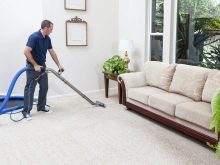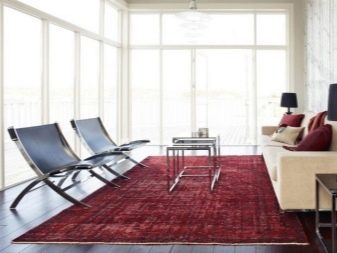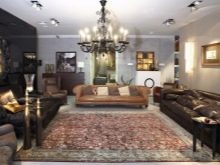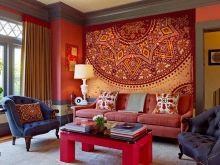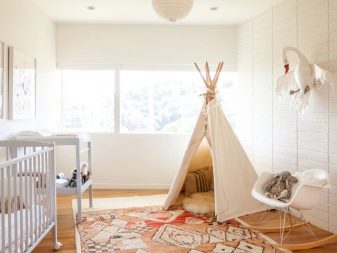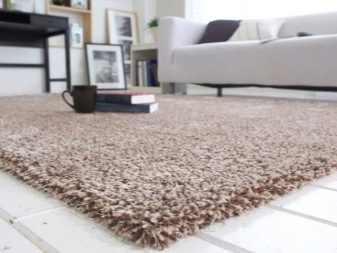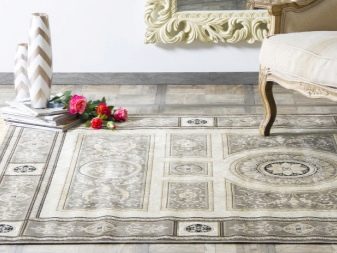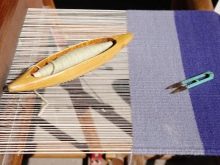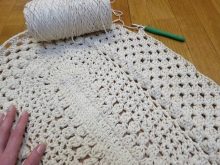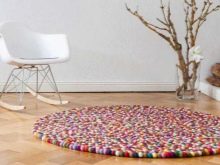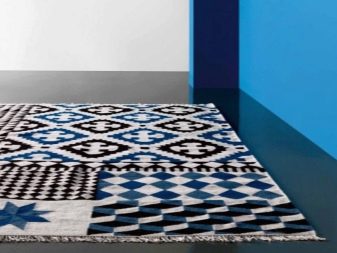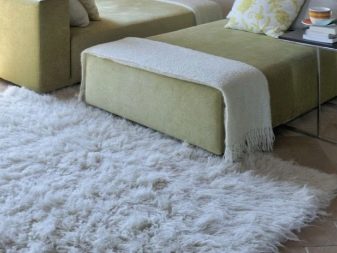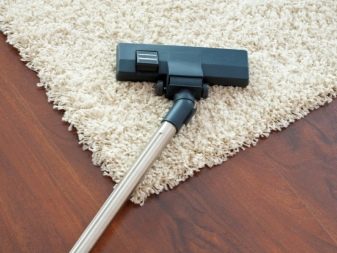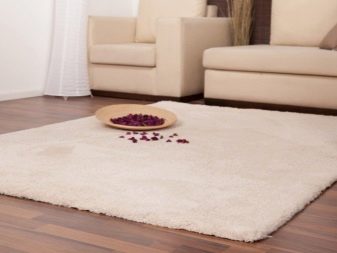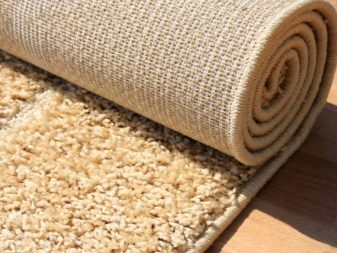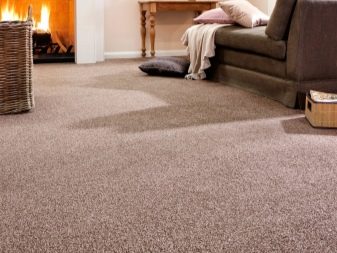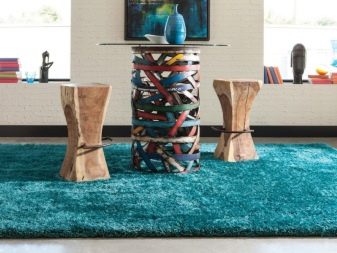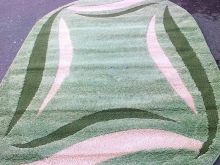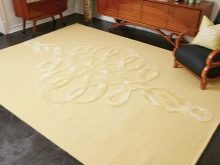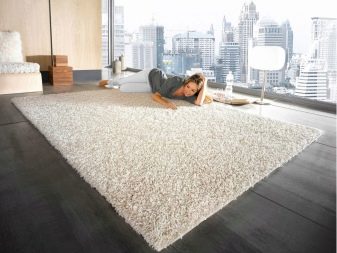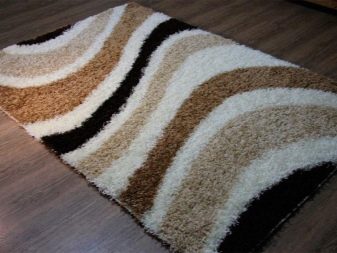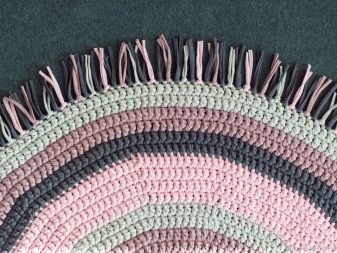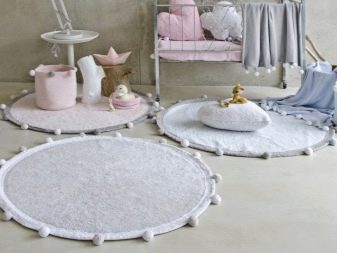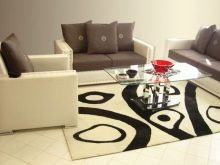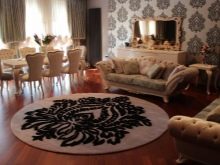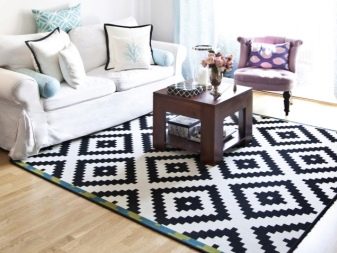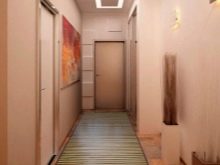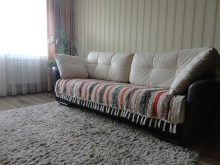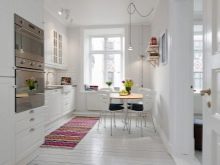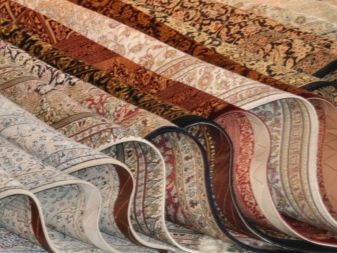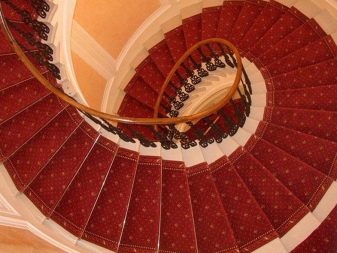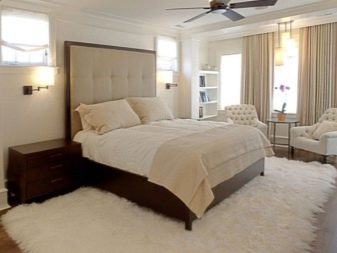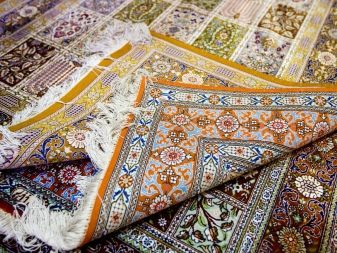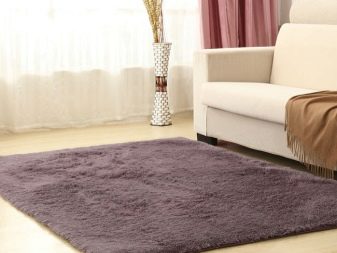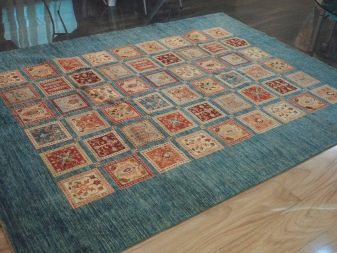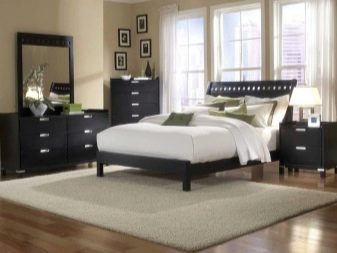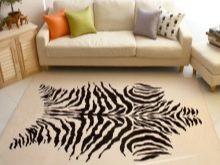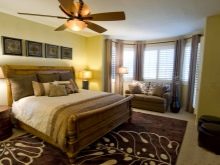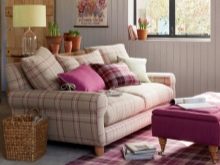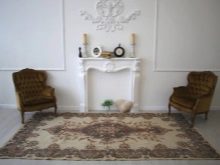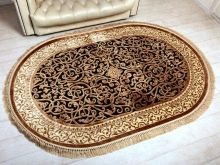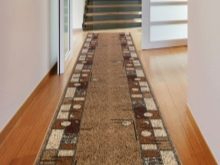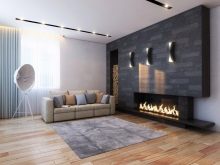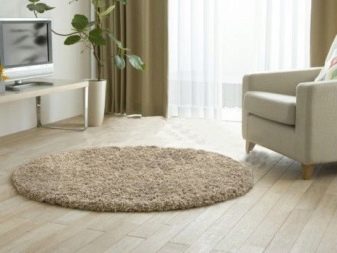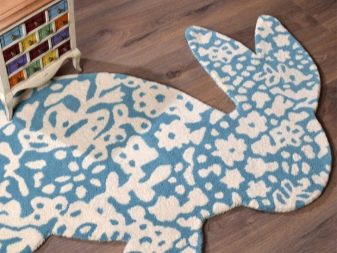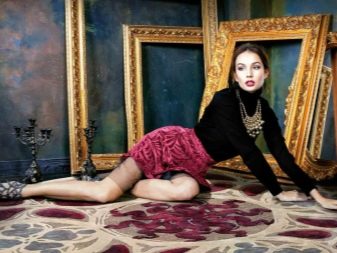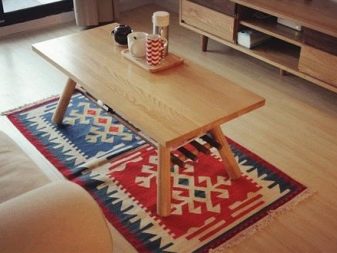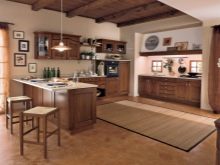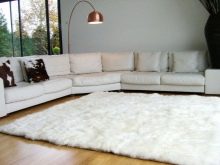Carpet Types
Carpets - unique solutions interior composition. These canvases are a key element of style design, giving it a basic idea. They combine the functional and aesthetic load, have a number of features and often change the type of flooring beyond recognition. Types of carpets are extremely multifaceted and diverse.
Special features
Carpet weaving has long been known, it has received wide development throughout the world and is a reflection of national cultures and centuries-old traditions. Modern carpet canvases have a special classification. They are divided into a mass of varieties, each of which has a number of advantages, however there are categories that have certain disadvantages.
Purpose
A distinctive feature of modern carpets is the functionality- an important factor in the decor of the interior. Based on the features of the models, carpets are capable of the following:
- Provide sound insulation, freeing the owners of the house from the annoying outsider noise;
- Protect the surface of the flooring from abrasion and mechanical damage in the areas of greatest permeability;
- Become a bright spot interior composition, pointing to the special taste of the owners of the home;
- Hide minor damage to the old flooring (scratches, cracks, holes);
- Become a temporary mat for yoga, meditation or exercise, replacing the topper (thin mattress).
Benefits
Carpets have a lot of advantages:
- They are made in a different way (on high-tech equipment by machine, manually on a special loom, by hand using the materials at hand);
- The work on carpets involves threads of natural, artificial and mixed origin, different in texture, length and number of knots per square meter;
- Carpets can be a self-sufficient accent of the interior composition or a binder component of different texture and shade of the furnishings;
- The models have a rich spectrum of color palette, opening up a lot of opportunities for the harmonious combination of the canvas with the color type of the existing design idea;
- Samples differ in a variety of prints, through which you can beat the degree of illumination of a particular room, increasing its space (especially important for small rooms);
- Carpets have a diverse size range and shape, so you can cover the floor completely or accentuate certain areas by selecting one of the zones (playing, sleeping, working);
- Coverage can be placed in virtually any room of the home (living room, children's room, spacious loggia, study, home library, bathroom, hallway and kitchen);
- Rugs give the interior completeness and home comfort, making the atmosphere a relaxing;
- Samples can be classical or thematic, which is expressed by means of a drawing or texture;
- They are standard classical or unusual type and composition, carrying purely decorative or strictly basic functions;
- The choice is not limited in style, and with a skillful choice there is an opportunity to harmoniously fit the carpet in any style direction from classic to modern creative ideas;
- Models have a different basis, so that in the rulers you can find extremely durable and reliable canvas for long and intensive use;
- Depending on the type of raw material, its quantity and complexity of manufacturing the coating, they differ in cost, which allows them to be purchased for the floor or wall, taking into account taste preferences and the planned budget.
Minuses
Carpets are a classic design technique, but with a lot of merit have disadvantages:
- Depending on the model, there are restrictions on the location;
- They do not always have antimicrobial and moisture-resistant impregnation, therefore not all of them are resistant to the formation of an environment for the appearance of fungus and moth;
- Not always hypoallergenic, therefore, require a solid choice and are not suitable for allergies;
- Mostly all accumulate dust on the surface and down to the base, which leads to the appearance of dust mites;
- In a humid environment, they absorb moisture, which can disrupt the structure of the coating and make it loose;
- Varieties with a nap are more difficult to care for; they do not always tolerate regular cleaning with a washing vacuum cleaner and knocking out;
- In most cases, they need a combination of fibers to achieve the highest practical and aesthetic characteristics;
- Large-sized models for the entire area of the room are inconvenient in location, they need to completely release the room from furniture and furniture;
- Budget options differ in a short service life, are impractical and simplify the interior composition with their appearance.
- Terry models make it difficult to care: the loops that make up the texture of the panels prevent getting rid of dust and small dirt.
What is the difference from carpet to carpet?
Today, the word "carpet" is called all types of carpet canvases, but in fact the carpet and the palace are not the same. They are united by the fact that both of them are carpeted. The difference lies in the structure and form. It is these two factors that determine the appearance and quality characteristics of products.
Carpet - a cloth which is more often presented in the form of a rectangle, a square, a circle or an oval. It can be small, of moderate size or overall. Some forms are creative at all and have an edge in the form of scallops, semicircles, zigzags, waves.Sometimes carpets are made in the form of flowers or the silhouette of the animal's skin. They do not have an overly elongated shape, almost always wide, they are distinguished by a rich selection of colorful colors with the addition of the original pattern, or they do not have it at all.
Carpets are demanding to care, can decorate walls or floors, often hide minor irregularities and do not move from the location, as they have a large weight. They are hard to fold.
Palaces are carpets that are intended solely for the floor, may be of greater length and performed in the technique of hand or machine weaving and do not have a pile. Their shape is strictly rectangular, the drawing is laconic and not always bright. Palaces are practical products., they are easy to maintain, they are solely laid on a flat floor, although during operation they can budge, as carpets are easier.
If desired, and depending on the size of these canvases can be folded. The structure of the texture is a loop, while the carpets - pile.
Kinds
Existing varieties of carpets are classified according to several criteria.By type of use, they are wall and floor.
Categories may include carpet types of different types: pile and lint-free. Two categories differ in the number of threads involved in the work. In the process of creating cloth in lint-free models, two threads are used (share and transverse), while in the production of pile products there are three threads: the main one, which goes around the pile threads, pile, the fragments of which consist of pile and fixing, which reliably binds the pile at the base .
According to the method of manufacturing carpets are divided into the following:
- Weaving - products created by the method of intersection of warp and weft threads on a loom;
- Braided, created by weaving threads into the base;
- Knitted - varieties that are performed by tying loops or sewing them with needles;
- Needle punched, mechanically bonded with needles;
- Typing - an analogue of needle-punched products with a small difference: in these products there is no cohesive impregnation;
- Flocked - canvases formed by gluing the pile to the adhesive backing;
- Tufted - a variety that uses a special pistol.
Each species has its own characteristics and advantages. If you choose a high-quality model that should be durable and reliable, you should look at the options with a strong wicker, woven and knitted base.
Moreover, it is important that it be dense and of high quality: this is the main factor in the durability of the product, regardless of the level of patency of the zone.
Floor felted counterparts are excellent sound absorbers and eliminate the floor from the cold. Fabric thin models are good for walls.
Texture
The surface of the carpet - one of the key factors of choice. It is important that the product be practical and comfortabletherefore it is necessary to know the features of their structure. In lint-free varieties, the surface is predominantly smooth and simple. These carpets do not have high noise insulation and do not provide warm feet. Products with pile are good because in most cases they allow you to sit on the floor reading books, watching TV, working on a computer, playing with children.
The comfort of the surface of the pile products is determined by the length of the pile. In short-haired options, it reaches 1-2 cm, in the ruler of long-pile varieties, the pile height, depending on the structure, can be from 2.5 to 10 cm. The length of the pile is one of the factors determining the cost of carpet. The bigger it is, the more expensive the product. However, not everything is so simple: the indicators of elasticity, fiber composition, resistance to weight loads (bending), ease of maintenance matter.
Not all models with a long pile are appropriate in the kitchen, hallway and corridor, as they do not provide for daily cleaning and suffer from every cleaning, which is reflected in the softness and beauty of the pile.
The most interesting texture solutions for the surface of the canvases are the following pile structures:
- Velor - plush villi of cut type of the same length;
- Frieze - “curly” yarn with a heat treatment of fibers and a pile length of up to 5 cm, resistant to crushing;
- Saxony - thermofixed fibers of the same length, resembling a frieze, having a length of up to 4 cm;
- Shaggy - shaggy villi from 3 to 7 cm long, resembling Saxon, but unlike them consisting of a pile of different thickness;
- "Cut-loop" - the combined pile of cut and uncut loops from 4 to 8 cm in length;
- Boucle - pile-loop, one of the varieties of short-hair models;
- Berber - pile-chaos, which is a tightly twisted yarn with an uneven structure;
- Scrolled - pile in the form of loops with cut tops.
Different structure of the pile determines the degree of filling of the web: in some cases it is quite dense, so the hairs are directed strictly upwards and do not fall on its side. In other cases, the base is loose, so when looking at the carpet in detail, you can notice the base.
The greater the number of nodes in the canvas and the longer the pile, the harder the carpet and the greater its weight.
Decor and layout
Decorative function - one of the important qualities of carpets. It depends on him the degree of relevance in this style of interior. In addition to drawing, products can be decorated with fringe, braid, cord, textured pompoms and other decor.
Models for children are often informative: made in the form of developing rugs, they can have more creative decor techniques: small soft toys, rustling materials, packaged in fabric covers and others.
A distinctive feature of such products is the use of a rug over the main one.It is placed on a classic carpet to prevent material from slipping. Such products help kids develop fine motor skills of hands.
For decorative techniques products are made in different ways:
- With the ornament, created from the pile;
- With embroidery over the woven base;
- With finishing on the edge, increasing the area of the product.
According to the type of drawing, the models can be the following one-sided or two-sided. The image carpets have the following modifications:
- In the form of a monotone spot;
- Like a realistic drawing;
- Stylized;
- With ornament;
- Abstract.
Each technique depends on the method of manufacturing a particular web, its purpose and scope. Cloths with short nap are more expressive lines, so they are often decorated with small details of the pattern. They are good in the interior of the kitchen, living room and hallways. The relief long-pile analogs cannot have clear lines, therefore the pattern on their surface is less expressive.
Products without pile are pertinent on kitchen, a wall. Palaces with a simple pattern without a wrong side are suitable for a corridor and small narrow rooms. Classic thin mats are an excellent decoration solution for the hallway.They do not complicate the cleaning of the room, if necessary, they can always be minimized or shaken out.
The application depends on the thickness: a woven double-weave or a thin embroidered carpet can be a decoration of upholstered furniture that performs the function of a stylish cover.
How to choose?
Choosing a carpet for the interior of the home is a thorough and creative task. If you do not take into account the nuances of choice, carpet can ruin the whole idea of design. Often in the store carpets are presented in the best light: at the location they have a backlight that distorts the real shades of the product and distracts the customer from the defects of the product.
So that the purchase was successful, harmoniously fit into the existing situation, pleased with the best qualities of the texture and looked expensive, It is worth listening to several recommendations:
- One hike to the store is not enough: first choose a model, then explore its strengths and weaknesses through feedback left by real buyers about this model on the Internet. Then, before buying, external data is again evaluated: the product does not often seem attractive at second glance.
- The purchase is carried out in a store that has a good reputation and attaches to its products the relevant documentation in the form of a certificate of quality and compliance with safety requirements, as well as rules for the care of the web.
- When buying a mandatory inspection of the base of the carpet: it must be tight or knit. Excluded are coatings with glue base, which, during intensive use, may disrupt the integrity of the coating (glue tends to crumble, leading to a loss of lint);
- If the carpet does not have a base and is made on a woven basis, attention should be paid to the thickness of the canvas: thin bedding gathers in a heap, form folds on the floor surface, sag on the wall, which deprives the interior of impeccability and hints at untidy home owners.
- The elasticity test will not be superfluous: a quality carpet bends well and quickly returns to its original position, and if it has a nap, it does not wrinkle.
- When choosing a carpeting, it is important to keep in mind the type of room: for stairs, choose a lint-free version or equivalent with a minimum height of villi.A laconic carpet or a small mat will suit the entrance hall, and a hypoallergenic fur model with a long nap in the bedroom. For the study and living room you should buy stylish elite products: they will favorably emphasize the status of the interior composition.
- Price is one of the landmarks. High-quality carpet product is not cheap. It is made of blended materials, resistant to abrasion and UV exposure, has a noble texture and looks expensive.
- Matters and composition of the carpet. The “right” and best floor models are products made from fibers containing cotton, wool and polyester in the mix. If you need a soft texture, you should pay attention to the microfiber cloth: such a soft carpet is not inferior to the cotton counterpart. Home comfort wall can provide a model of silk.
- It is worth paying attention to the smell: a sharp smell says about toxic dyes used in the manufacture of this product and the toxic composition of the glue. You should not expect that the fragrance will disappear, it does not always happen.
Materials
Raw materials for the manufacture of carpets varied and is divided into three types of fibers:
- Natural (cotton, wool, silk);
- Artificial (polyester, microfiber, viscose, acrylic, plush velor);
- Blended (cotton with acrylic, wool and acrylic, and others).
In addition to the basic materials in the production of jute and felt. Each type of raw material has strengths and weaknesses on which the durability and practical qualities of any carpet depend:
- Natural fibers used in production are mainly hypoallergenic raw materials. They are not harmful to health, pleasant to the touch, look solid, but they are expensive and in most models impractical. Today, such carpets give way to synthetic counterparts.
- Artificial materials are cheap raw materials for the production of carpets, they are durable and tactile sensations and external characteristics are not inferior to natural counterparts, although instantly fade in the sun.
- Mixed raw materials - a balance of quality and durability, a combination of the best properties of natural materials and synthetic fibers. Products made of blended material are affordable, good in life and wear-resistant.
Colors
Patterns and colors of carpets are multifaceted. Conventionally, the color palette is divided into two groups of practical colors and light shades.The first group includes shades of beige and brown, wine, terracotta blue-gray and smoky. In addition to these, rich colors are popular: green, mint, turquoise, orange. The second group has a premium color. These are canvases in elite shades of pastel colors (light pink, celestial, peach, sandy, nude).
Drawing is a separate topic, through which the carpet is able to harmoniously fit into any style. It can be of different subjects and types:
- With a central element and edging;
- In the form of a certain print cut;
- Of the composite elements with repetition over the entire surface;
- In the form of images on the entire area of the canvas.
The theme of the patterns is varied. It can be nature, animal print, striped black and white pattern, floral and floral motifs, ethnic ornaments, stripe, cell, geometric shapes, abstraction.
An interesting technique is the imitation of vintage, in which on the surface there is a drawing with the theme inherent in former times.
Sizes and shapes
The forms of carpets are diverse and are subject to the characteristics of specific rooms (for example, for the podium or the bay area).Depending on this, they can be standard or non-standard, irregularly shaped. They are large, medium or even small. The size of the species depends on the shape and varies:
- For oval and rectangular - 60x110, 80x150, 90x150, 120x180, 150x200, 170x240, 200x300, 250x300, 300x400, 350x450, 400x500, 400x600, 500x600 cm;
- For round and square ones - 60x60, 80x80, 100x100, 150x150, 200x200, 250x250, 300x300, 350x350, 400x400 cm;
- The tracks are classified according to the length (200, 250, 300, 350, 400, 450, 500, 600 cm) and width (60, 70, 75, 80, 90, 100, 120, 130 cm and more).
The most sought-after carpet shapes are rectangular, square and round. Oval varieties today are inferior to the round, although they can smooth out the interior, softening the overall composition. Products made at home are often not subject to any standards and are voluminous toy carpets in the form of sheep, bears, rabbits, piglets, chanterelles, kittens. They bring a fresh look and a special magical atmosphere of childhood into the dimension of a child.
Carpets of peace in the interior
The centuries-old traditions in carpets are reflected in the epoch of each country by means of special ornaments inherent in a particular nationality. Today, brands offer a lot of varieties of carpets.The rulers have models of a universal plan, which are designed for modern interiors and are designed for a mass circle of buyers, other models “breathe” with the ethnic principle and obey the strict canons of symbolism.
We give the characteristics of some products:
- Vietnamese carpets have a key central element, framed in several frames, each of which is generously decorated with traditional ornament in the form of butterflies, flowers, vases and jugs, ornate lines.
- English carpet paintings attract the attention of a combination of tradition and novelty. They have a main field filled with floral lace with simple buds, as well as a piping with a border that emphasizes the premiumness of the product and is often made in a contrasting shade.
- Italian carpets often have an elaborate accent in the center, which is framed by a wide edging in the form of a frame, lace vignettes. Some species are distinguished by the lack of a frame, having a colorful lace middle.
- Works of Japanese manufacturers are unique and different from all analogues. Ethnic motifs are presented in the form of high-class paintings, they are decorated with calligraphy, sakura blossoms, fans,dragons and cranes. These are canvases that can be spread exclusively to emphasize the design idea. They are incredibly elegant and, depending on the type of raw materials used, can decorate the accent walls of the room.
Reviews
Carpets - a special reception interior design. This is evidenced by numerous customer reviews left on the Internet. Customers are satisfied with the purchase of such products: carpets are the best than you can emphasize the idea of design and point out the special taste of the owners of the house. The number of flawless models includes long pile carpets. They are considered premium linens of all rulers. Buyers note: fur and shaggy carpets are not comparable with other analogues, they have no equal in creating home comfort.
Among the lint-free models emit mats. Buyers believe that these cloth and wicker mats save the floor surface in the dining area, in some cases they can even be washed (if the canvas is small, thin and made of cloth). Those who adore bold experiments, distinguishes ethnic carpeting and believes: they are unique, “breathe” with originality and fit perfectly into modern style.
Negative reviews are associated with the quality of the pile, which, with inadequate care, makes itself felt as a worsening of the texture.
For more information on carpets in the interior, see the following video.
